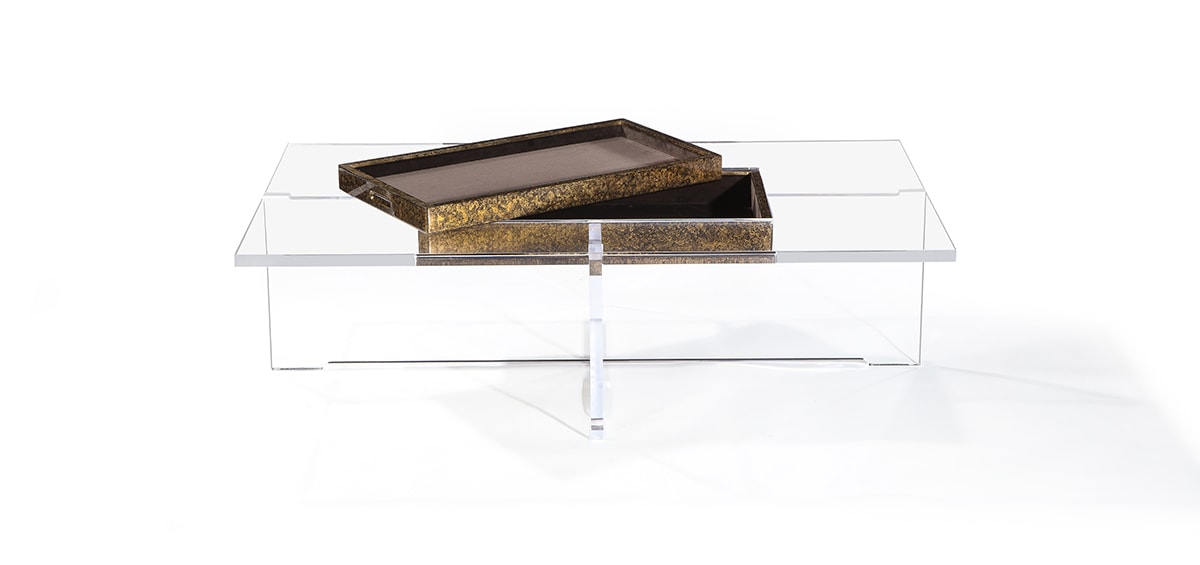How To Honor A Furniture Design Icon’s Beautiful Legacy
It’s not often a furniture designer leaves behind such an indelible mark on the world of interiors.

Left: The kidney-shaped Sculpted Wood Loveseat’s open back offers a slimmer profile and a more artistic sensibility than its closed-back counterpart.
Right: The Big Picture Sofa. Through Holly Hunt.
American-emigrated, German-born designer Vladimir Kagan’s (1927–2016) prolific body of work—emblematic of the most daring of midcentury modern design—is unique in its enduring appeal. Innately sensuous, organic forms combine comfort and materiality with highly-engineered forms—and showcase an unstoppable imagination.
The director of Design and Production at Vladimir Kagan Design Group since 2015, Chris Eitel first apprenticed for Kagan (or “Vladi,” as he calls him), in the summer of 2013 before finishing his last semester at Kendall College of Art and Design in Grand Rapids, MI—where Kagan consulted on the furniture design curriculum. Eitel grew close to the designer and his family in the interim—oftentimes sailing in Nantucket, schmoozing at cocktail parties, and discoursing at all hours until summer’s end. After completing his BFA, Eitel returned to work for Kagan. “We shared a lot of commonalities,” he says. “Though we both designed and gravitated toward more modern takes on furniture, we truly loved antique furniture,” he explains. “The idea of creating an illusion within a product also fascinated us—if you could float or cantilever a piece, he did it. He took a fun approach to thinking about furniture design that really drew me.”

Left: Chris Eitel, director of Design and Production at Vladimir Kagan Design Group. Photograph by Andrea Fremiotti
Right: Eitel’s Sculpted Saddle Seat Bar Stool.
Chris Eitel—protégé of the late design icon, Vladimir Kagan—carries on the Kagan legacy with a new collection at Holly Hunt
Kagan and his team were well versed in technological advances, so when Eitel brought 3D printing into the mix, it just upped the pace. “Vladi taught me that you are given an immense number of tools to create,” explains Eitel. “It doesn’t have to be on the computer, or on a piece of paper—you can sculpt it out of clay, make a model out of balsa wood—it’s all a process until you find what you’re searching for.” Soon after, the twosome worked on reissues in the designer’s Clifton, NJ, headquarters—truly becoming mentor and mentee and creating full-scale models and designing limited-edition pieces for Ralph Pucci International and Carpenters Workshop Gallery.
After Kagan’s passing in 2015, Eitel, with the encouragement of the designer’s family, continued refining many of the archival designs. The goal of any reissue, he states, is to keep it as similar to the original as possible—while incorporating tweaks for improvement and manufacturing and technological advances. “What we’re doing with our design program here is trying to tell Kagan’s stories, whether that’s through a series of reissues or through something new,” explains Eitel.

Left: Vladimir Kagan—shown on his much-lauded Barrel chair in 1947—helped shape American design for the better part of a century.
Right: Modern flying buttress legs define Eitel’s Sculpted Wood Bench.
In 2016 Holly Hunt purchased the Vladimir Kagan Design Group, indicating a new evolution. Jo Annah Kornak, SVP & executive creative director of Holly Hunt, explains, “There was a natural synergy between the two brands—a mutual commitment to quality, innovation, and exquisitely crafted design. Our goal is always to celebrate great design globally and with the Kagan brand, we wanted to offer the tools and resources to carry Vladimir’s legacy into the next generation, and onward. Chris and his team knew the brand better than anyone. We went through all the archives, and many needed a real modern twist—hence some reintroductions. But Chris is an ideal collaborator, and he had some really fresh ideas within the language and ethos of Kagan—and that spawned the Forward Collection. It came out beautifully.”
Eitel’s aptly named Forward Collection marks his first original designs for the brand. Consisting of six masterful pieces, the range includes the curvilinear Big Picture Sofa—which features a double-crescent form with a cantilevered seat—a Bienenstock Coffee Table (a nod to Eitel’s personal favorite, Kagan’s Omnibus Collection), a Sculpted Saddle Seat Bar Stool that defies all expectations, a Sculpted Wooden Bench with a striking channeled seat, and two Sculpted Wood Loveseats—each with a different back. And so, Kagan’s legacy will continue to influence and inform, moving forward into the future.

The Bienenstock Coffee Table’s built-in decorative storage box appears to float in the middle of its lucite structure.
